Featured
- Reset filters
- 28 results
- (-) Rwanda
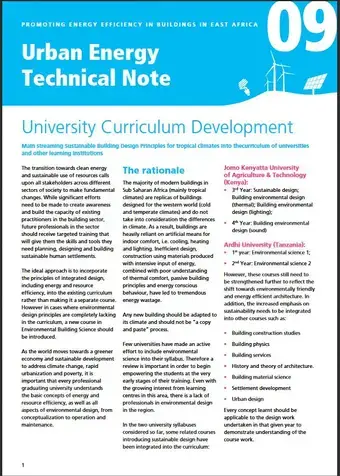
Brief
Urban Energy Technical Note 09: University Curriculum Development
2015
The transition towards clean energy and sustainable use of resources calls upon all stakeholders across different sectors of society to make fundamental changes. While significant efforts need to be made to create awareness and build the capacity of existing practitioners in the building sector, future professionals in the sector should receive targeted training that will give them the skills and tools they need planning, designing and building sustainable human settlements.
Read now
En savoir plus
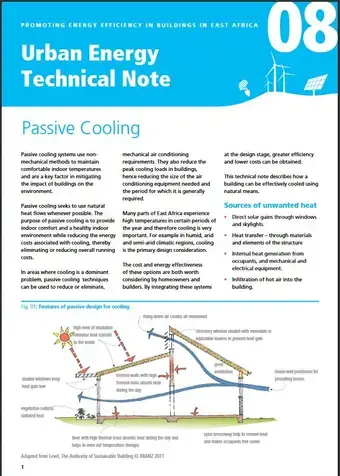
Brief
Urban Energy Technical Note 08: Passive Cooling
2015
Passive cooling systems use non-mechanical methods to maintain comfortable indoor temperatures and are a key factor in mitigating the impact of buildings on the environment.
Read now
En savoir plus
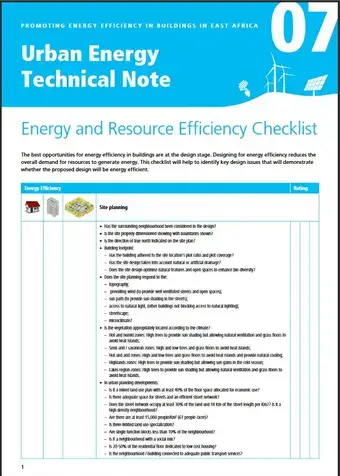
Brief
Urban Energy Technical Note 07: Energy and Resource Efficiency Checklist
2015
The best opportunities for energy efficiency in buildings are at the design stage. Designing for energy efficiency reduces the overall demand for resources to generate energy. This checklist will help to identify key design issues that will demonstrate whether the proposed design will be energy efficient.
Read now
En savoir plus
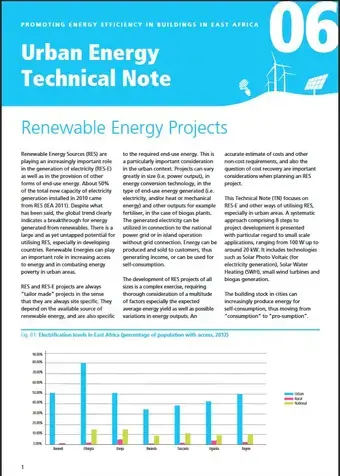
Brief
Urban Energy Technical Note 06: Renewable Energy Projects
2015
Renewable Energy Sources (RES) are playing an increasingly important role in the generation of electricity (RES-E) as well as in the provision of other forms of end-use energy. About 50% of the total new capacity of electricity generation installed in 2010 came from RES (IEA 2011). Despite what has been said, the global trend clearly indicates a breakthrough for energy generated from renewables. There is a large and as yet untapped potential for utilising RES, especially in developing countries…
Read now
En savoir plus
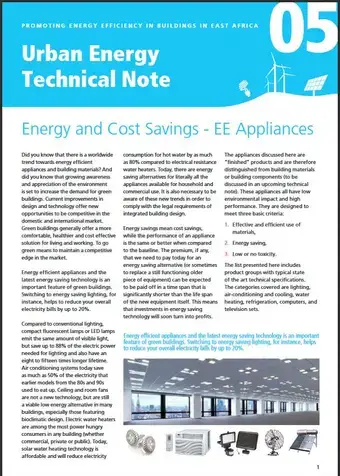
Brief
Urban Energy Technical Note 05: Energy and Cost Savings - EE Appliances
2015
Did you know that there is a worldwide trend towards energy efficient appliances and building materials? And did you know that growing awareness and appreciation of the environment is set to increase the demand for green buildings. Current improvements in design and technology offer new opportunities to be competitive in the domestic and international market. Green buildings generally offer a more comfortable, healthier and cost effective solution for living and working. To go green means to…
Read now
En savoir plus
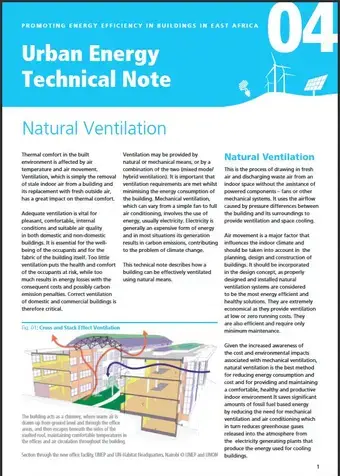
Brief
Urban Energy Technical Note 04: Natural Ventilation
2015
Thermal comfort in the built environment is affected by air temperature and air movement. Ventilation, which is simply the removal of stale indoor air from a building and its replacement with fresh outside air, has a great impact on thermal comfort.
Read now
En savoir plus
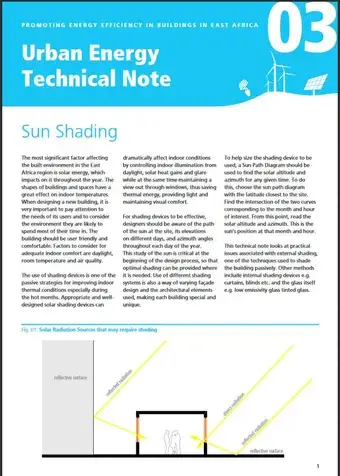
Brief
Urban Energy Technical Note 03: Sun Shading
2015
The most significant factor affecting the built environment in the East Africa region is solar energy, which impacts on it throughout the year. The shapes of buildings and spaces have a great effect on indoor temperatures. When designing a new building, it is very important to pay attention to the needs of its users and to consider the environment they are likely to spend most of their time in. The building should be user friendly and comfortable. Factors to consider for adequate indoor comfort…
Read now
En savoir plus
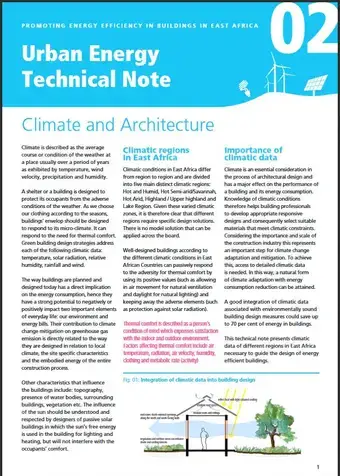
Brief
Urban Energy Technical Note 02: Climate and Architecture
2015
Climate is described as the average course or condition of the weather at a place usually over a period of years as exhibited by temperature, wind velocity, precipitation and humidity.
Read now
En savoir plus
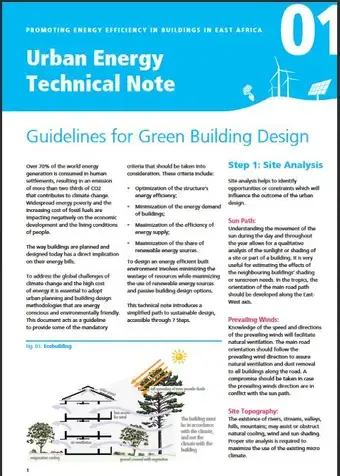
Brief
Urban Energy Technical Note 01: Guidelines for Green Building Design
2015
Over 70% of the world energy generation is consumed in human settlements, resulting in an emission of more than two thirds of CO2 that contributes to climate change. Widespread energy poverty and the increasing cost of fossil fuels are impacting negatively on the economic development and the living conditions of people.
Read now
En savoir plus
Document
HSP/EB.2024/4- Report of the midterm review of the strategic plan of UN-Habitat for the period 2020–2025
Posté le avril 17th, 2024
Read now